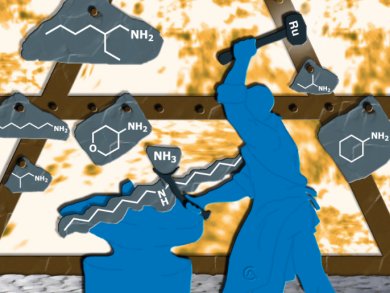Amines are used as starting materials in both the bulk and fine chemical industries; for example, for the synthesis of pharmaceuticals and agrochemicals, and as building blocks for polymers and dyes. Primary amines can be made by the selective amination of alcohols, but current catalytic approaches result in a mixture of primary, secondary, and tertiary amines.
Matthais Beller and co-workers, Rostock University, Germany, have used a ruthenium catalyst to convert these secondary and tertiary amine side products into primary amines. Secondary amines are dehydrogenated to imines and subsequent condensation with ammonia produces the primary amide and primary imine. The imine can be re-hydrogenated and reused. The products were obtained in yields up to 84 % by using a Shvo catalyst.

Images: (c) Wiley-VCH
- Synthesis of Primary Amines from Secondary and Tertiary Amines: Ruthenium-Catalyzed Amination Using Ammonia
S. Bähn, S. Imm, L. Neubert, M. Zhang, H. Neumann, M. Beller,
Chem. Eur. J. 2011.
DOI: 10.1002/chem.201100007




